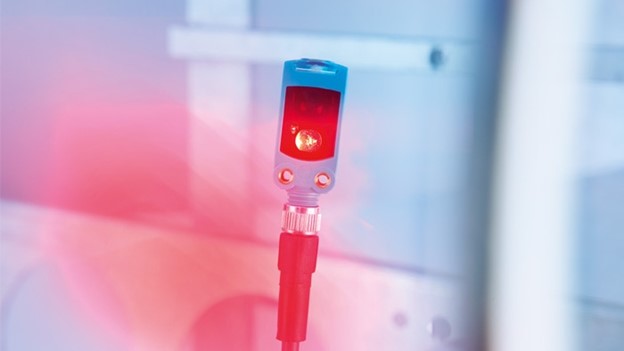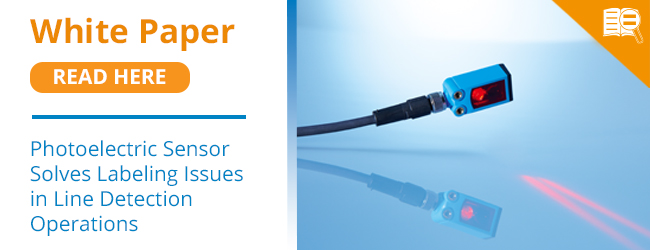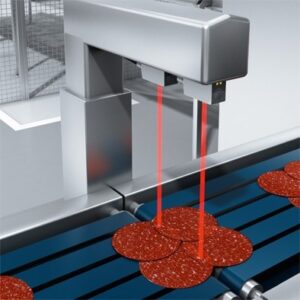Long-time partner, Aztro, seeks improvement in client's line detection issues, SICK creates a new photoelectric sensor
The search for an ideal conveyer detection solution
SICK Australia sales engineer Kevin Zarczynski was on-site within hours of receiving a call from Aztro, Australia’s leading supplier of labeling machines. He knew he needed to help come up with a viable solution for their client. The client specializes in the labeling of slimline clear trays for products like single slice cheese and prosciutto. With a labeling operation like this, it’s imperative to have a solution that detects the packaging to make sure the labeling is actually correct. However, the ultrasonic sensor originally installed to detect the packaging for accurate labeling was not meeting the desired result.
Aztro managing director, Niall Lynch, said the Aztro Labelers are designed to work within a plus-minus of 1 mm labeling tolerance. With this type of product, ultrasonic sensors could not keep up with variations in the packaging dimensions.
“The customer came to us for a solution, and we then turned to Kevin at SICK,” said Lynch. “We get the vast majority of our sensor solutions from SICK, so when we have a need for a new solution or to do something different, we will always contact Kevin and ask him to have a look at the alternatives available to us.”
Lynch showed Zarczynski a sample of the low profile packaged products the following day and he was able to identify a solution in a very small window of time.
A photoelectric sensor comes to fruition
“We came up with a sensor that didn’t even exist the week before. It seemed like the ideal solution,” Zarczynski said. That new sensor is the WTB4 Double-Line photoelectric sensor. “It’s a multi-tasking product delivering the features our customers have been asking for and we were finally able to bring it to market. It is the best for reading glossy, shiny products with a small height moving along the conveyor belt.”
The sensor is also able to overcome any issues created by conveyor belts that don’t have a completely seamless surface.
“The type of conveyor this customer was using had little holes in it, so the sensor had to be able to read only the product while ignoring the gaps in the conveyor belt,” said Zarczynski.

The customer needed a sensor that was able to read only the product while ignoring the gaps in the conveyor belt.
Another big selling point of the WTB4 Double Line is its ease of use, from installation to daily operation.
“Aztro was able to mount it before we even had a chance to demonstrate. It’s easy to use and it solves our customers’ problems. It will help improve efficiencies and throughputs in the Australian packaging industry,” Zarczynski added.
After arriving on site, Zarczynski and a SICK application engineer helped demonstrate the capabilities of the double-line sensor. The client then requested the commissioning of sensor installation onto their production line. Solving the packaging detection issue brought several benefits along the line as well, like affordability, ease of setup through BluePilot, a reflector-free design, and its ability to work within short ranges and on the thinnest of objects.
One setup, more continuity
“There was a lot of downtime because you would have to adjust the ultrasonic sensors anytime the product on the line was changed; some lines might have five to ten separate products a day,” said Lynch. “A lot of time would be spent each day on getting the sensor right, but this new sensor allows for one setup for the entire product line to run through. They came back to us extremely happy because the sensor has given them a continuity of production.”
For Lynch, the affordability and practicality of the WTB4 Double Line are equally matched and have the potential to be a ‘huge boost’ for the packaging industry.
Get the White Paper to learn more!
![]() Would you like learn more about SICK's photoelectric sensors? Download our white paper about the W4F sensor here!
Would you like learn more about SICK's photoelectric sensors? Download our white paper about the W4F sensor here!







